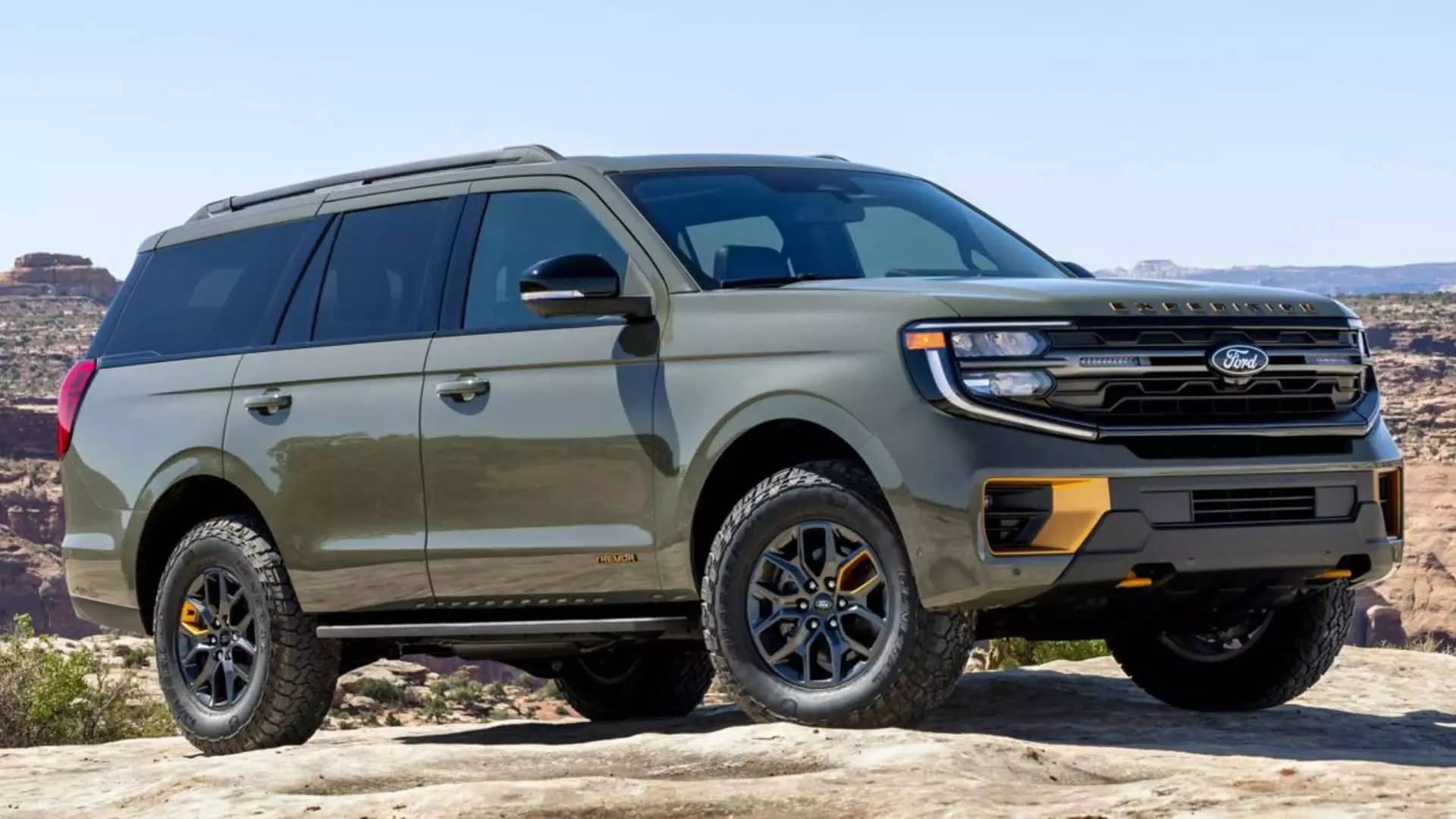In a bid to elevate its standing in the competitive full-size SUV market, Ford Motor Company is rolling out a redesigned version of its Expedition for 2025. This ambitious overhaul focuses on enhancing technology and comfort, responding to the demands of modern families seeking convenience and luxury in their vehicles. The shift comes in response to intensified competition, particularly from segment leaders like General Motors’ offerings as well as emerging players like Jeep and the popular three-row crossovers from Kia and Hyundai.
One of the most striking aspects of the new Expedition is its redesigned interior and exterior. Ford has made significant strides toward creating a more polished vehicle that caters to the aesthetic and practical needs of consumers. The spacious cabin now features a stunning 24-inch driver display, merging cutting-edge technology with everyday usability. Ford’s commitment to customer satisfaction is evident; over 1,100 hours spent interacting with families have influenced the design and utility of the new SUV.
That focus on family convenience is crucial. The enhancements are not merely cosmetic; they are geared towards making trips more enjoyable and accommodating for every passenger. With features that streamline the travel experience, Ford aims to assist families in maximizing their time together, ensuring both comfort and connection.
The inclusion of Ford’s BlueCruise hands-free highway driving technology is a noteworthy advancement in the Expedition, allowing for a safer, more relaxing driving experience. This pioneering system enables drivers to engage in hands-free driving on designated highway segments, thereby redefining convenience for families on the go. Although specific pricing has yet to be disclosed, the current Expedition models range from approximately $55,000 to $84,000, reflecting the investment in technology and quality.
Moreover, as the market shifts toward crossovers and more compact alternatives, understanding this dynamic is crucial. The competition is not just from traditional full-size SUVs. Vehicles like the Kia Telluride and Hyundai Palisade have grown in popularity, challenging the established players by offering competitive pricing and valuable features.
According to recent data from industry analysts, the full-size SUV segment, which includes the new Expedition, has seen remarkable growth, now accounting for approximately 2.7% of the U.S. automotive market. This growth trajectory, highlighted by sales of around 312,500 units through September of this year, underscores the increasing demand for these spacious vehicles.
Ford’s strategy appears to entail a careful reorganization of the Expedition’s lineup into five distinct models: Active, Platinum, King Ranch, the off-road-oriented Tremor, and an extended “Max” version. This structured approach aims to cater to varying consumer preferences, from luxury seekers to adventure enthusiasts looking for capability and versatility.
As the 2025 Expedition prepares to enter the market, Ford is poised to not only maintain its relevance among full-size SUVs but also strategically challenge its competitors. By focusing on customer insights, improving comfort and convenience, and leveraging cutting-edge technology, Ford is equipping the new Expedition with the tools it needs to succeed in a rapidly evolving automotive landscape. As families prioritize comfort and safety in their travels, the redesigned Expedition might very well emerge as a frontrunner in fulfilling these modern demands.

